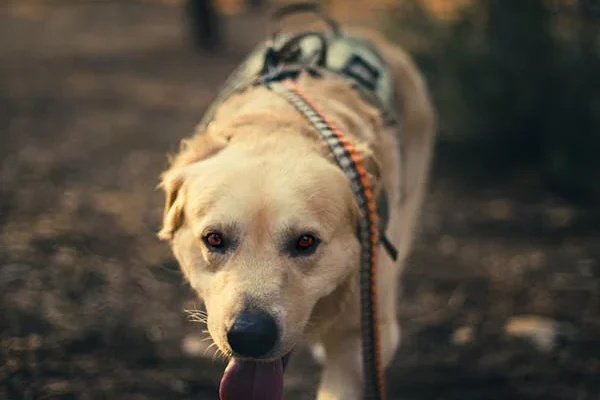
The Role of Regular Exercise for Your Pet
Introduction
Pets are more than just companions; they’re family members who enrich our lives with their loyalty, affection, and charm. But did you know that just like us, pets need regular exercise to stay healthy and happy? Exercise isn’t just about burning energy; it’s a vital component of a well-rounded pet care routine. In this article, we’ll explore why exercise is crucial for your pet’s well-being and how you can make it a fun, integral part of their daily life.
Benefits of Exercise for Pets
Physical Health Benefits
Regular exercise helps your pet maintain a healthy weight, which is crucial for preventing obesity-related issues like diabetes and joint problems. Exercise also boosts cardiovascular health, keeps muscles strong, and improves flexibility.
Mental Health Benefits
Exercise isn’t just about the body—it’s great for the mind too! Physical activity helps reduce stress, combat boredom, and alleviate anxiety in pets. It can even help address behavioral problems like excessive barking or scratching.
Physical Health Benefits of Regular Exercise
Weight Management
Obesity is a common issue in pets, leading to a host of health problems. Exercise helps burn excess calories, keeping your pet at a healthy weight and reducing the strain on their joints and heart.
Prevention of Diseases
Regular activity improves circulation and strengthens the immune system, reducing the risk of chronic conditions like arthritis, diabetes, and heart disease.
Mental Health Benefits of Regular Exercise
Reducing Stress and Anxiety
Just like humans, pets can experience stress. Exercise releases endorphins, the “feel-good” hormones, which help pets stay calm and relaxed.
Improving Behavioral Issues
A tired pet is a happy pet! Regular activity channels excess energy, reducing unwanted behaviors like chewing, digging, or aggression.
How Much Exercise Does Your Pet Need?
Factors Affecting Exercise Needs
The amount of exercise your pet needs depends on factors like age, breed, and health. Active breeds like Border Collies need more exercise than low-energy breeds like Bulldogs.
General Guidelines for Dogs and Cats
- Dogs: Aim for 30 minutes to 2 hours of activity daily, depending on the breed.
- Cats: 15-30 minutes of playtime spread throughout the day is sufficient.
Exercise Recommendations for Dogs
Types of Exercises
- Walking and jogging
- Fetch and tug-of-war
- Agility training
Best Practices
Always start slow, especially if your dog isn’t used to regular exercise. Gradually increase intensity and duration to build stamina.
Exercise Recommendations for Cats
Engaging Indoor Activities
- Laser pointers
- Feather wands
- Puzzle toys
Outdoor Exercise Options
If your cat is leash-trained, consider taking them for a walk in a safe area. Catios (enclosed patios) are also a great option for outdoor exploration.
Exercise for Small Pets
Rabbits and Guinea Pigs
Provide space for hopping and running. Tunnels and obstacle courses can keep them engaged.
Birds and Other Small Animals
Encourage flight in birds by providing ample space or supervised out-of-cage time. Small rodents benefit from exercise wheels and climbing structures.
Creating an Exercise Routine
Tips for Consistency
- Set a regular schedule.
- Incorporate exercise into daily routines, like playtime after meals.
Incorporating Variety
Switch up activities to keep things exciting. Introduce new toys or change routes during walks.
Signs Your Pet Needs More Exercise
Behavioral Indicators
- Destructive chewing or scratching
- Excessive barking or meowing
Physical Signs
- Weight gain
- Restlessness or hyperactivity
Safety Tips During Exercise
Avoiding Over-Exertion
Watch for signs like heavy panting or slowing down. Always provide water and take breaks.
Recognizing Signs of Fatigue
If your pet lies down or refuses to continue, it’s time to stop. Never push them beyond their limits.
Exercising Pets in Different Seasons
Summer Considerations
Exercise during cooler parts of the day and avoid hot surfaces that can burn paws.
Winter Precautions
Keep sessions shorter in cold weather and protect paws with booties if needed.
How to Make Exercise Fun for Your Pet
Interactive Games
Hide-and-seek, treat hunts, and obstacle courses are excellent ways to keep your pet entertained and active.
Using Toys Creatively
Rotate toys to maintain interest. Interactive toys like treat dispensers are great for mental and physical stimulation.
The Role of Diet and Exercise Together
Balancing Food Intake with Activity
Ensure your pet’s calorie intake matches their activity level. Consult your vet for guidance.
Importance of Hydration
Always provide fresh water, especially during and after exercise sessions.
Conclusion
Regular exercise is a cornerstone of pet health and happiness. By incorporating daily activity into your pet’s routine, you’ll help them live a longer, healthier, and more fulfilling life. So grab that leash, toss that toy, and get moving with your furry (or feathery) friend!
FAQs
What happens if my pet doesn’t get enough exercise?
A lack of exercise can lead to obesity, behavioral problems, and health issues like diabetes and joint pain.
How do I know if my pet is exercising too much?
Watch for signs like excessive panting, limping, or refusal to continue. Always allow rest days.
Can older pets still benefit from regular exercise?
Absolutely! Adjust the intensity and type of exercise to suit their age and health.
What are some safe exercises for pets with health issues?
Low-impact activities like short walks, swimming, or gentle play can be great for pets with limitations.
Are there specific toys or tools that help with pet exercise?
Yes, toys like balls, feather wands, and interactive puzzles can make exercise enjoyable and effective.


